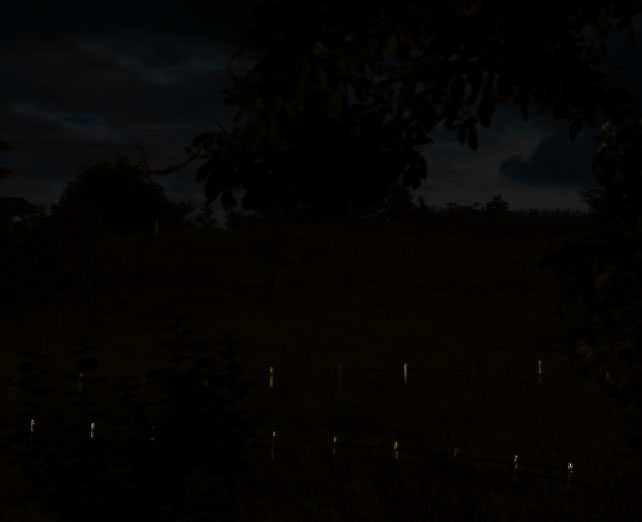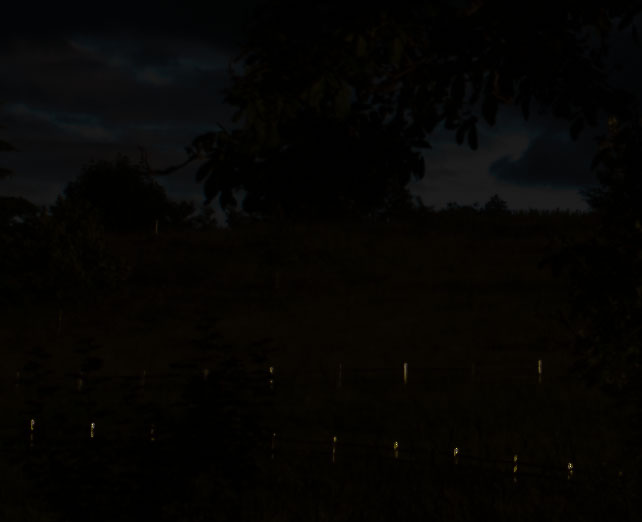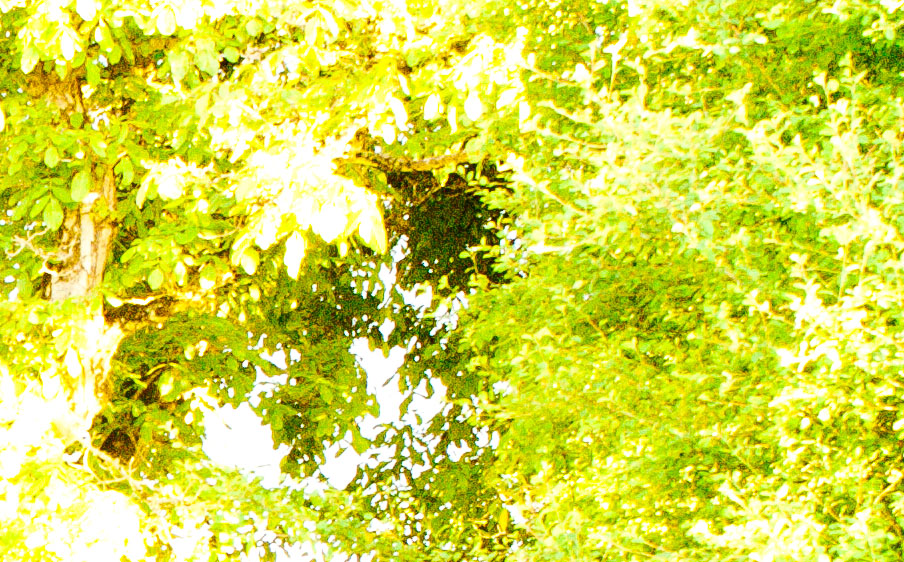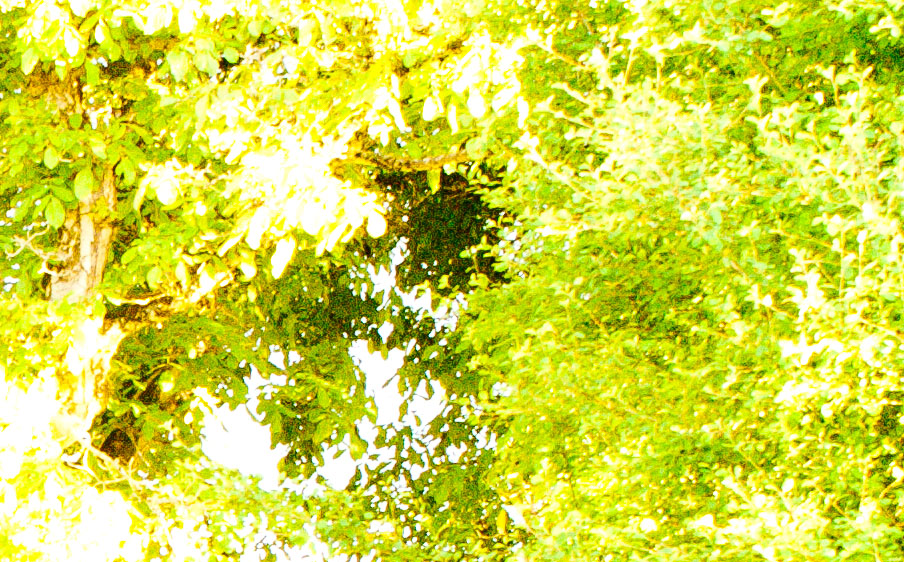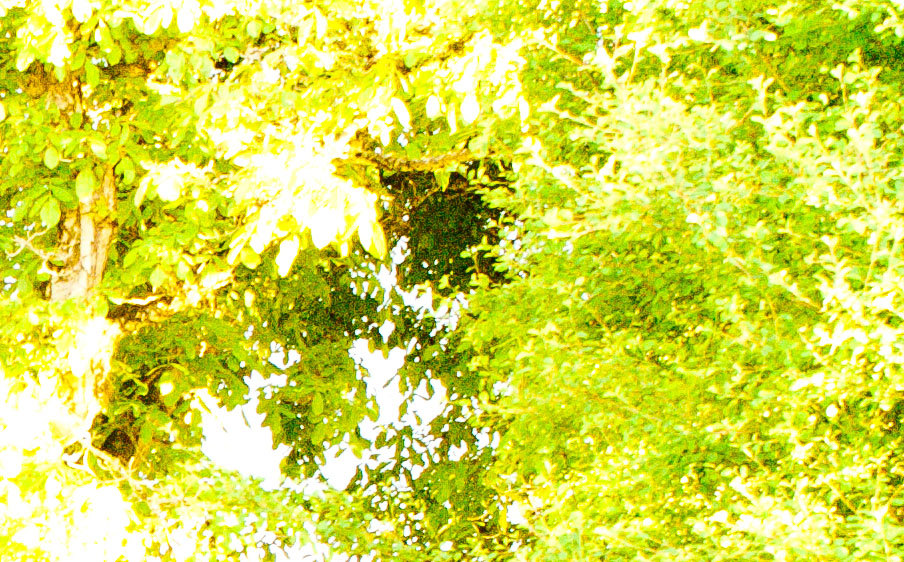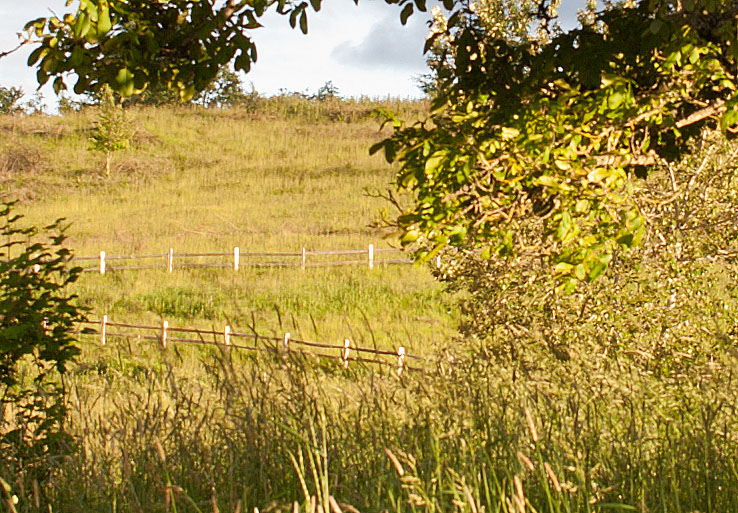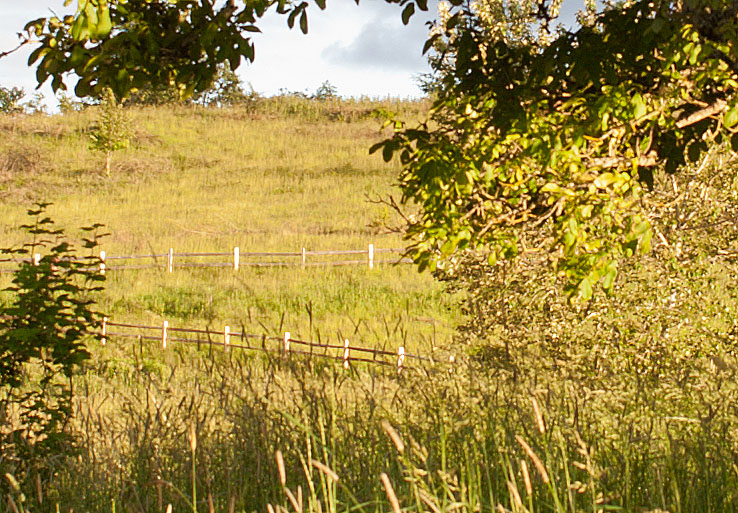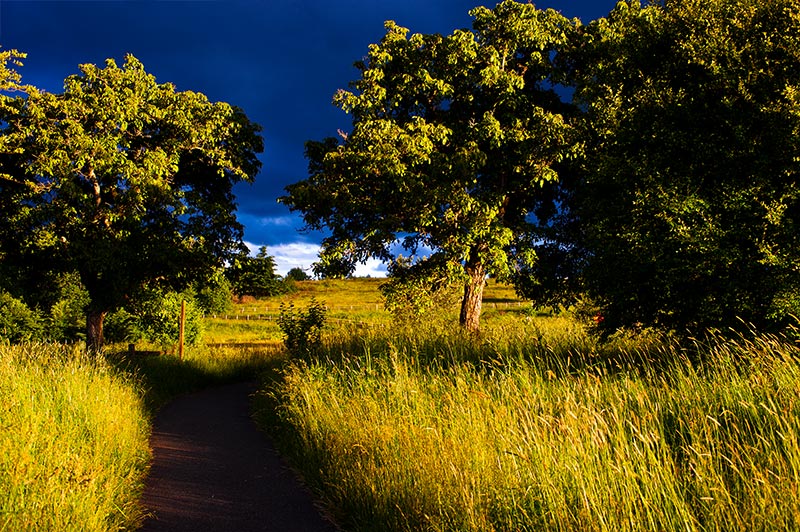(or: Proving what I already knew)
In the last post we looked at what bit-depth means and how it is theoretically useful. It could theoretically be useful for recovering detail and tonal nuances that don’t appear obvious from standard processing. The example I gave was to illustrate how under extreme settings we could add contrast to enhance the appearance of an edge between two nearly similar colors (two nearly identical shades of green).
Theoretically, a file with more bit depth has more information and if manipulated, we might be able to use that information in useful ways.
So, let’s take a look at this from a capture standpoint. Pedal, meet my dear friend, Metal
I’ve taken three identical pictures using different raw settings. (raw files available in a single zip here) The first file is a 14-bit native file, the second, is 12-bit, and the third is a 12-bit with purportedly slightly lossy compression. These were taken with a setting sun at the same shutter and aperture values as close together as possible (changing bit-depth settings on the camera takes me a couple seconds).
I’m processing these RAW files with a trial of the latest version of Adobe Camera Raw (6.4) in Adobe Photoshop CS5. The camera is a Nikon D700. The lens is a Tokina 28-70/2.8 shot at f8 on a tripod. The underwear are Hanes.
Let’s look at the highlights. I’ve found the only thing clipping completely in the scene is the distant fence posts. I’ve applied a -4 exposure setting and -150 brightness setting. In other words I’ve made everything as dark as possible, bringing the brightest parts into a range visible on the palette of our monitors. What this will tell us is if the 14 bit file is retaining any information in the highlights that the 12-bit file is throwing out.
There’s an amazing amount of difference there, huh? (sarcastic tone implied)
Ok, I’ll admit, there are differences if you look REALLY closely. The light on the field changed from shot to shot. However, that’s not what we’re looking at. Check the brightest thing in the scene: the fence posts. (If your monitor isn’t calibrated optimally, that just might be the only thing visible!) The fence posts are the brightest thing in the scene, and the 14-bit file has failed to capture more information in those highlights than the other two files. They all look about the same to me.
Now lets look at the other end of the spectrum: the shadows.
To do so, I’ve taken the same three files and processed them with the default settings, except for the exposure slider, which I’ve set to +4. I found the darkest spot in the entire scene to illustrate here. Some spots in this area read 3/3/0 at default brightness settings.
…and again, not a whole lot to differentiate these to my eye.
What I’ve just established is that the 14-bit setting (at least on this camera at base ISO) does not retain any more usable information in the highlights or shadows than the 12-bit setting.
Well, what about all those color values in between? Could detail be drawn out of the enhanced precision of those finer increments of tone? Let’s look…
Even with subtle exposure differences…I’m not seeing a whole lotta difference here. Are you?
These are the three biggest reasons I hear photographers argue for using the highest bit depth available: highlight recovery, shadow recovery, and added detail. In the case of this camera, these reasons are a myth. Shooting raw will give you those advantages vs. jpegs or TIFFs directly from the camera. The two extra bits of math don’t add anything tangible.
I’ll be happy to test other cameras the same way. I’d expect similar results. (I’ve done this test with older Nikon models and some MF backs, but never kept the files. Can you see why? You have to take incredibly high contrast pictures to test this out!)
If you’re shooting raw, I can’t see any reason to pick a higher bit-depth than 12. Current technology doesn’t show more information than that.
For me, the advantages of shooting 12 vs. 14-bit far outweigh the disadvantages–smaller files mean more files on a card, more shots before your buffer is full, and less space required for long term storage if you keep your raw files.
Even if you shoot extremely sloppy (gross over or under exposure), you won’t see a benefit from higher bit depth settings.
There’s only one thing that I didn’t explicitly test here: color. That will be the final part of this trilogy. And, frankly, the most boring.


